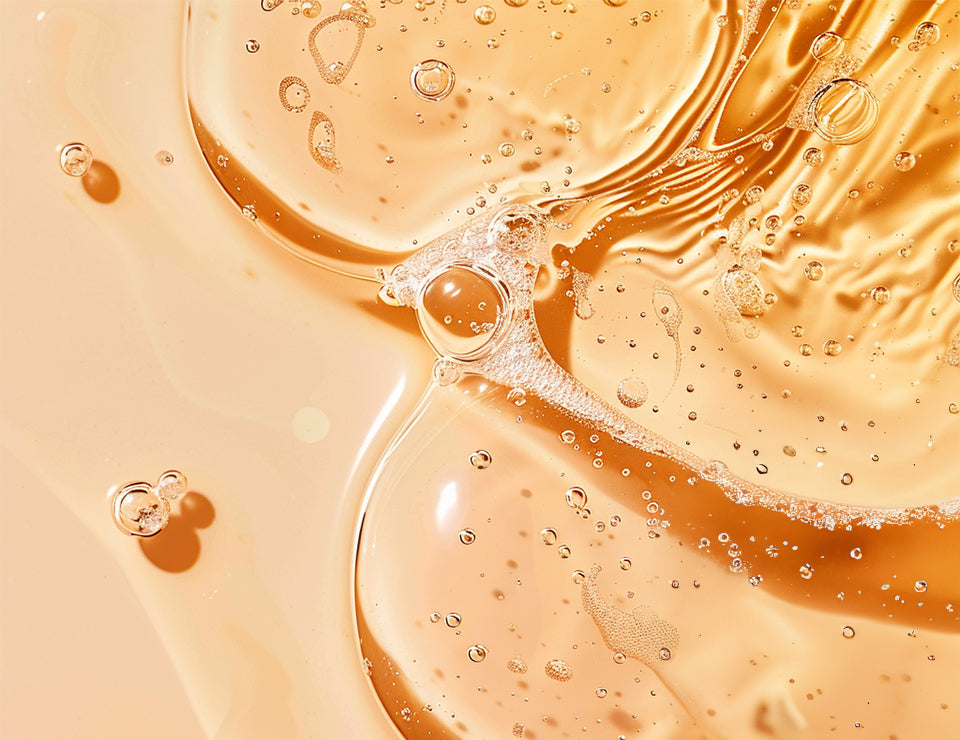Hydroxypinacolone Retinoate at a Glance
- Production: HPR is an ester of retinoic acid and is chemically synthesized.
- Effect on Skin: Reduces visible signs of skin aging, improves skin texture, and minimizes acne breakouts.
- Target Group: Individuals with aging skin, uneven skin texture, or acne.
- Interesting Fact: HPR binds directly to retinoic acid receptors without prior conversion in the skin.
- Alternative Names: Granactive Retinoid, HPR.
The Effects of Hydroxypinacolone Retinoate
Hydroxypinacolone Retinoate is a cosmetically used ester of all-trans-retinoic acid (ATRA) that binds directly to the retinoic acid receptors in the skin, acting without the need for metabolic conversion. This reduces side effects such as skin irritation that are often associated with ATRA application.
- Anti-Aging: HPR promotes collagen production and increases skin elasticity. Studies have shown that HPR significantly boosts collagen synthesis and increases skin thickness, leading to a reduction in wrinkles.
- Acne Reduction: HPR has anti-inflammatory properties and can reduce acne breakouts and associated redness without disturbing the skin barrier.
- Improvement of Skin Texture: The use of HPR leads to a smoother and more even skin texture by promoting cell renewal and reducing pigmentation spots.
The Proper Use of Hydroxypinacolone Retinoate
- Frequency of Use: HPR can be used daily, preferably in the evening, to account for its light-sensitive properties.
- Concentration: Products containing HPR are effective at concentrations as low as 0.2%.
- Combination: It is advised to avoid combining HPR with exfoliating acids to prevent potential irritation.
Hydroxypinacolone Retinoate vs. Retinol
- Stability: HPR is more stable than retinol and less prone to degradation by light and air.
- Skin Tolerance: HPR causes less skin irritation compared to retinol because it binds directly to receptors and does not require conversion.
- Mode of Action: Both promote collagen production and improve skin texture, but HPR has a faster and more effective action due to its direct binding.
Hydroxypinacolone Retinoate vs. Retinaldehyde
- Mechanism of Action: While retinaldehyde needs to be converted into retinoic acid, HPR acts directly.
- Skin Irritations: HPR is generally gentler on the skin compared to retinaldehyde, making it better for sensitive skin.
- Efficacy: HPR shows stronger effects in reducing wrinkles and improving skin texture compared to retinaldehyde.
What is Hydroxypinacolone Retinoate?
HPR is a retinoic acid ester with the chemical formula C26H38O3. It is synthesized through the esterification of all-trans-retinoic acid and offers effective anti-aging benefits by directly binding to retinoic acid receptors with fewer side effects.
Does Hydroxypinacolone Retinoate Have Side Effects?
Compared to other retinoids, HPR is well-tolerated and causes fewer skin irritations. However, it is light-sensitive and should be stored in light-protected packaging and applied in the evening to maximize efficacy and protect the skin.
What is Granactive Retinoid?
Granactive Retinoid is the trade name for a formulation containing 10% Hydroxypinacolone Retinoate and 90% Dimethyl Isosorbide. This combination ensures increased stability and improved absorption of the active ingredient into the skin.
This blog article provides you with a detailed overview of Hydroxypinacolone Retinoate and its benefits for skincare. Use this information to make informed decisions about your skincare products and take optimal care of your skin.
Sources
- Bai D, Hu F, Xu H, Huang J, Wu C, Zhang J, Ye R. High Stability and Low Irritation of Retinol Propionate and Hydroxypinacolone Retinoate Supramolecular Nanoparticles with Effective Anti-Wrinkle Efficacy. Pharmaceutics. 2023 Feb 22;15(3):731. doi: 10.3390/pharmaceutics15030731. PMID: 36986592; PMCID: PMC10051651.
Ruth, Nora & Mammone, Tony. (2018). 1310 Anti-aging effects of retinoid hydroxypinacolone retinoate on skin models. Journal of Investigative Dermatology. 138. S223. 10.1016/j.jid.2018.03.1327.
Wang Q, Hu F, Hu X, Xie Y, Du L, Ye R. The synergistic effect of retinyl propionate and hydroxypinacolone retinoate on skin aging. J Cosmet Dermatol. 2023 Jul;22(7):2040-2049. doi: 10.1111/jocd.15662. Epub 2023 Feb 10. PMID: 36762391.
Manfredini M, Sticchi A, Lippolis N, Pedroni G, Giovani M, Ciardo S, Chello C, Guida S, Farnetani F, Pellacani G. Characterization of Acne-Prone Skin with Reflectance Confocal Microscopy and Optical Coherence Tomography and Modifications Induced by Topical Treatment and Probiotic Supplementation. J Clin Med. 2023 Jul 20;12(14):4787. doi: 10.3390/jcm12144787. PMID: 37510902; PMCID: PMC10381777.









